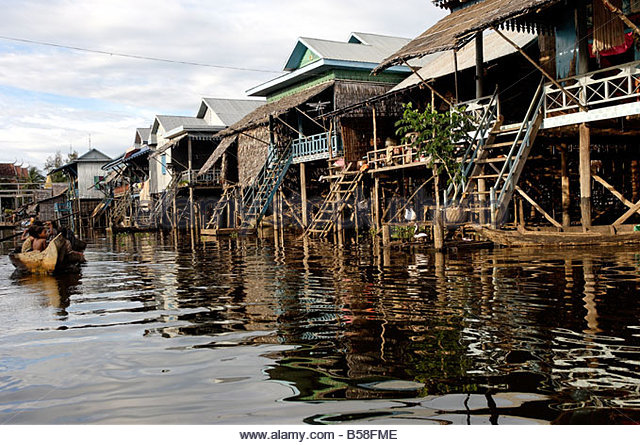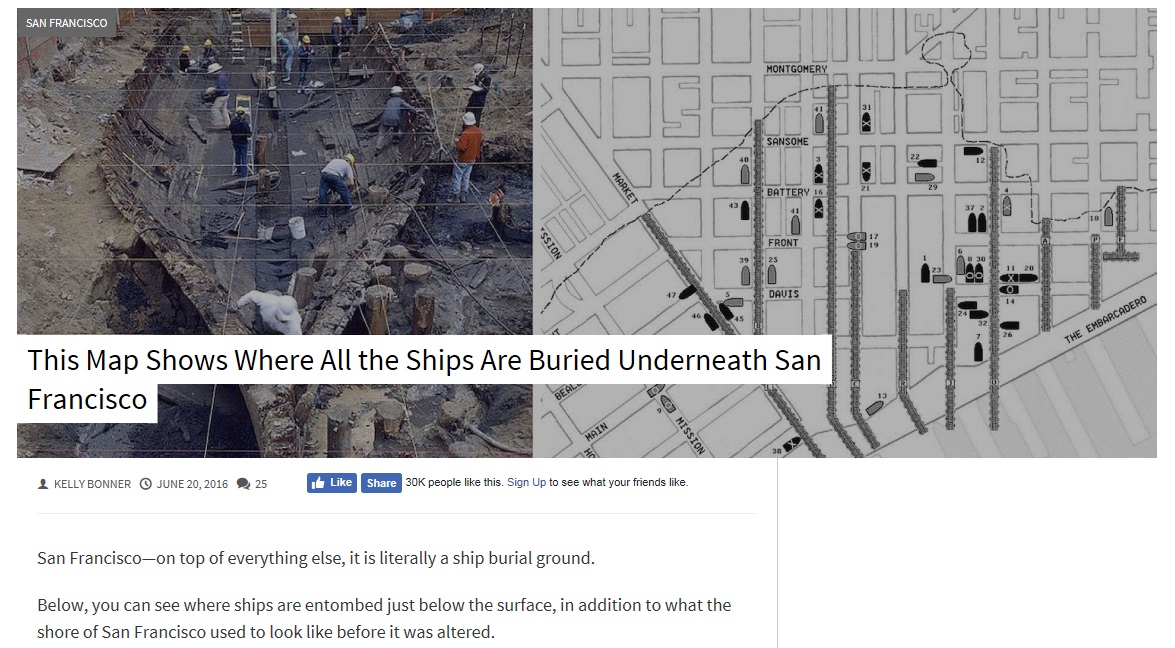The important references for you are the Aztecs and the Khmer both of which built an empire so are entirely appropriate for you to use. Also St. Petersburg and Venice are good one city examples.
The Aztecs as others have mentioned built artificial islands by collecting the mud and supporting it with wood pilings. They could build large islands suitable for buildings and smaller ones suited for agriculture.
Such islands have very good agricultural productivity so this would give you the food production needed for large cities and an entire empire. The high productivity is due to excellent irrigation given by the surrounding swamp and due to the mud used to build the islands being rich in nutrients. Once the nutrients get depleted, the islands is simply demolished and a new one built from fresh mud. This system avoids most issues other forms of agriculture have with the soil quality degrading over time.
I think the natural progression of architecture would be: Huts made from reeds or mud brick for commoners. Painted and decorated mud brick and wood for the wealthy and important. Imported stone for the public buildings to prove the power of the state. The stone buildings would be on larger and more stable islands and have actual basements to stop them from sinking. You should also use vaulted construction to make buildings less massive for their size. That said the carrying capacity of such ground is mostly a matter of using enough wood pilings and question said "abundant wood".
Concrete is also something to consider. It makes building large structures easier and, in theory, allows building large structures that float in the water. Although I do not think anyone actually did that before modern aircraft carriers. But you could, if you have lots of good concrete. The Romans probably could have done it and they are what you gave as technology level reference...
The Khmer were the other reference I gave. What you should copy from them is their use of waterways. They used an extensive system of canals to connect a large plain for easy transport and to supply irrigation for large area of water intensive agriculture.
You do not need extra irrigation, but the canals would supply an efficient transport system capable of, for example, transporting large blocks of stone huge distances for your building projects. Dredging canals would also be a natural source of mud for your artificial islands. There is natural symmetry between digging navigable canals and building artificial islands that would make your empire quite efficient. And of course the easy transport of food would allow the cities to grow much bigger.
The canals would also provide water level control if you add some locks to them. And you really should as this level of control would hugely improve your resistance to both drought and flooding. The nature would still be able to overwhelm the system, but usually droughts or floods would result from mismanagement r corruption letting the system fall into disrepair.
Easy ways to get drinking water are collecting rain water and filtration. (Aztecs built an aqueduct, which Cortez then cut.) Constant rain is kind of annoying so I guess the best solution would be to let your people build filtered wells on their artificial islands. You could also have the people drink drinks such as beer or wine which contain alcohol that kills bacteria and thus store better than water. Personally I would probably just make my state more powerful by giving it control of large cisterns. I find "Be a good citizen or drink sewage!" appealing for some reason.
That said alcohol does have some attractive properties as well. Namely alcohol (or vinegar) not only store themselves, they can also be used to store foods that would otherwise not store well. Storage in alcohol or vinegar can also replace cooking and allow the swamp people save valuable and scarce wood. I mean even if the question said "abundant wood", the wood would not stay abundant long if the swamp is filled with people constantly burning wood. So heavy use of alcohol might be used to explain why the heartland of your empire still has lots of wood.
EDIT:
Important note on the consequences of this type of construction. This requires large scale planning and coordination to work. As such there would be large bureaucracy managing the canals, the locks, and the artificial islands. If all agricultural land is produced by large scale construction linked to upkeep of canals performed by the state, then the state will control all agricultural land and by extension almost all of available food. They will also control all trade along the canals.
So the likely outcome would be a state permeated by a monolithic centralized bureaucracy. Which might not be what is wanted.
You can avoid this by being earlier in the evolution of the system.
It starts with the individual villages building artificial islands for agriculture. Then some villages grow into centers of trade and people start building larger islands for them and improving the connecting water ways. At that point communal decision making by villages is not enough and city based bureaucracy is born. After an empire is born the bureaucracies are combined and gain the capability to build improved canals and manage the water level. Which is a big benefit to having an empire. After this the centralized bureaucracy will start taking over the control villages have over land.




